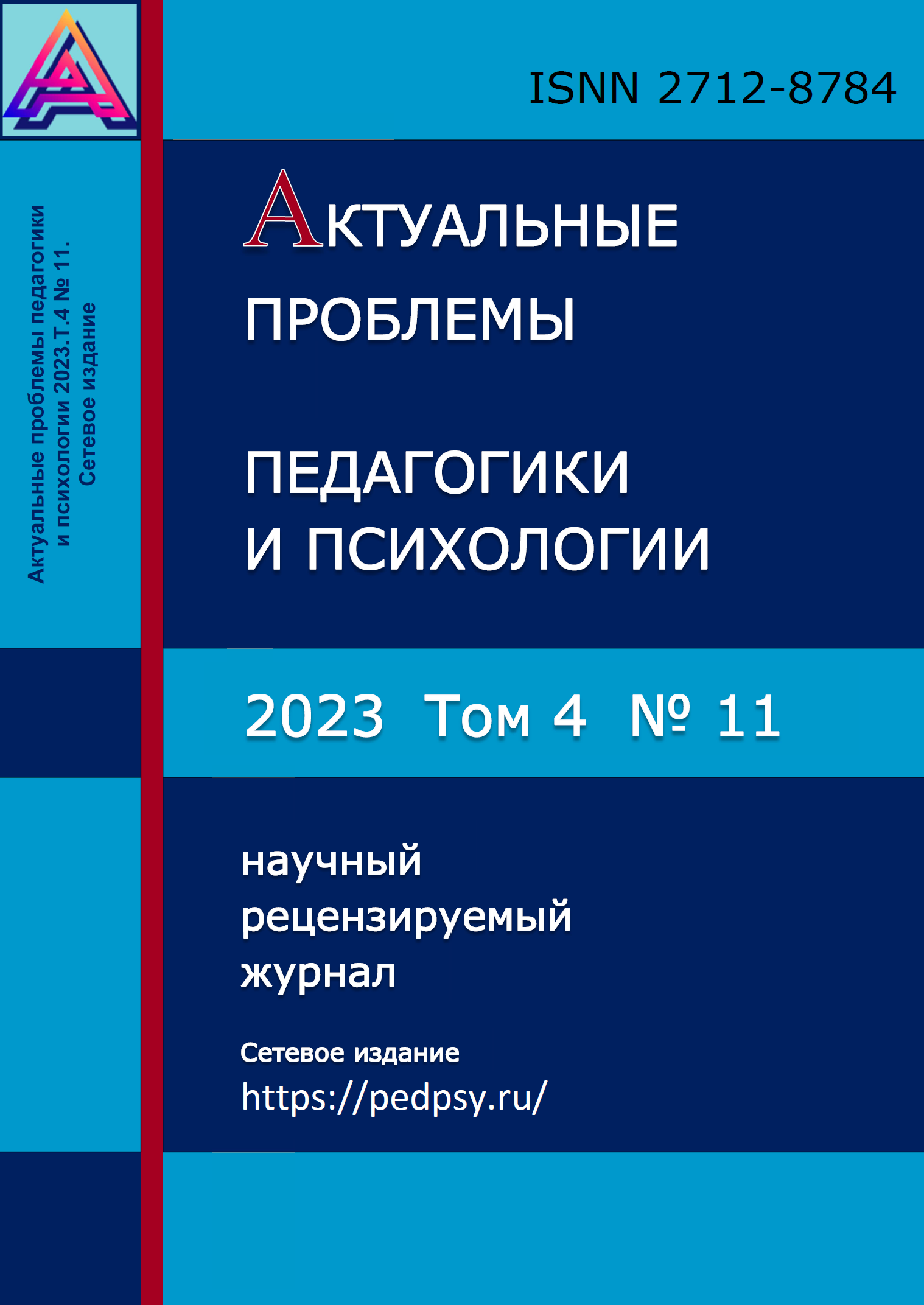FEATURES OF TEACHING ENGLISH IN SECONDARY VOCATIONAL EDUCATION
Keywords:
Keywords: secondary vocational education, professional competence, foreign language communicative competence, English language, foreign language teaching in secondary vocational education.Abstract
Abstract. The system of secondary vocational education is aimed at training a qualified mid-level specialist in a specific industry. The implementation of training programs is ensured in accordance with state standards in the context of a competency-based interdisciplinary approach. Teaching a foreign language in this context is aimed at developing foreign language communicative competence to deepen acquired qualifications and communication in professional discourse.
Relevance. The paper describes the theoretical principles of teaching a foreign language as a basic part of the professional competence of a specialist of any qualification.
Problem, goal, tasks. The problem is that currently a key part of vocational education is the formation of professional competence. The purpose of the work is to consider teaching a foreign language in the secondary vocational education system as the formation of foreign language communicative competence (FLC) as a structural component of a specialist’s professional competence.
Materials and Methods of research. The research materials were current scientific sources based on previous studies over the past years. Research methods: analysis and synthesis of previous scientific research on a given topic and systematization of the results in a theoretical aspect in relation to training at SevCITaI.
Results and discussion. It has been determined that one of the aspects of a specialist’s professional competence is a foreign language. A foreign language during the training period forms general competence (GC) and includes an English language course in the disciplines “Foreign Language” and “Professional Foreign Language”.
Conclusion.English is designated as the main foreign language for non-linguistic areas of vocational training. This aspect involves the implementation of training focused on the formation of basic foreign language communicative competence in two components: a general language course (1 year) and professional discourse (at least 1 year). Depending on the specialty, training in a professional language course will involve appropriate vocabulary, while the general course focuses on improving previously learned rules of the English language, forming a lexical core of 2500-3000 words.
References
Линейцева Э. Р. Интегрированные уроки иностранного языка в системе среднего профессионального образования //практическая конференция «Современная система образования: опыт прошлого–взгляд в будущее». – С. 144.
Недорезова Н. А. Роль проектной деятельности в системе подготовки специалистов среднего звена//Университетский комплекс как региональный центр образования, науки и культуры. – 2023. – С. 2430-2434.
Поникаровская В. В. К вопросу о роли иностранного языка в образовательном маршруте будущего специалиста //Профессиональное лингвообразование. – 2022. – С. 73-78.
Проняева М. В. Профессиональная направленность обучения иностранным языкам //Наука, образование, общество: тенденции и перспективы развития. – 2022. – С. 99-103.
Слепкова Ф. Т. Преподавание общеобразовательной дисциплины «Иностранный язык» с учетом профессиональной направленности (из опыта работы) //Процветание науки. – 2022. – №. 5 (11). – С. 46-54.
Downloads
Published
How to Cite
Issue
Section
License
Copyright (c) 2023 Данько Юрий Владимирович

This work is licensed under a Creative Commons Attribution-NonCommercial 4.0 International License.
Availability of publications based on the Creative Commons license
The journals Materials of international conferences and "Actual Problems of Pedagogy and Psychology" are open access journals, which means that all content is freely available to the user or his/her institution for free. Users can read, download, copy, distribute, print, search or link to the full texts of articles or use them for any other legitimate purposes without the prior permission of the publisher or author.
Copyright is reserved for the author without restrictions, the license applies to readers and the publisher.
Availability of publications based on the Creative Commons license
Attribution-Non-Commercial 4.0 International (CC BY-NC 4.0)
This is a human-readable summary of (and not a substitute for) the license. Disclaimer.
You are free to:
- Share — copy and redistribute the material in any medium or format
- Adapt — remix, transform, and build upon the material
- The licensor cannot revoke these freedoms as long as you follow the license terms.
Under the following terms:
- «Attribution» — You must give appropriate credit, provide a link to the license, and indicate if changes were made. You may do so in any reasonable manner, but not in any way that suggests the licensor endorses you or your use.
- Non-Commercial — You may not use the material for commercial purposes.
- No additional restrictions — You may not apply legal terms or technological measures that legally restrict others from doing anything the license permits.
Notices:
- You do not have to comply with the license for elements of the material in the public domain or where your use is permitted by an applicable exception or limitation.
- No warranties are given. The license may not give you all the permissions necessary for your intended use. For example, other rights such as publicity, privacy, or moral rights may limit how you use the material.



.jpg)

.jpg)
